We’ve been here three weeks, now. This post will likely catch me up to the present. Not much to report, the illness we had has set us back a bit. As I think I mentioned earlier, our travel plans to Dumaguete and Palawan have been discarded. Neither of us have the energy.
I’ll start in the older part of Asgad, the original barrio.

Looking east down the avenue that leads to our beach shelter and Praxy’s old house. The barrio captain’s (we would call him a mayor) house is on the left. Adam Ranit and I are friends from a long time ago. It was nice to meet up with him and chat, we had another long discussion about building tourism in the area this morning. One of the few people that is fairly fluent with English. Across the street to the right is a typical site, a tiny grocery store.
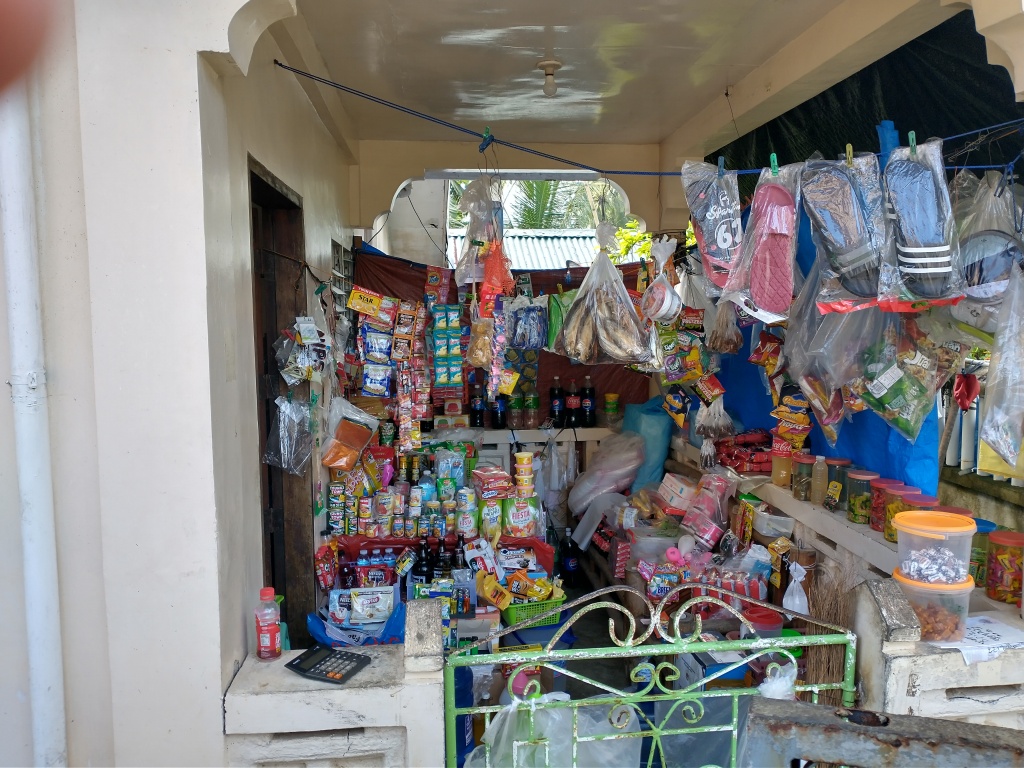
This is the largest one in the area. A little bit of everything, here. Canned goods, toiletries, laundry bath and dish soap, beer, snacks, candy, refrigerated bottled water, bakery items; anything the owner thinks she can sell. There are eight or so smaller stores in the area. The profit margins are infinitesimal. Everyone scrapes by. For instance, a packet of 3-in-1 coffee sells for about12 pesos. That packet is purchased in Guiuan for about 10 pesos. A 4 cent margin. Yes, many people will buy just one.
Some stores sell liquor, 5 gallon drinking water bottles, home cooked food, and medicines. For instance, the owners buy large bottles of oil, or bags of sugar, or rice, etc. They then break those down to very small amounts put into small plastic bags. Many locals could not even think of affording a 1 gallon bottle of anything. So they go to the store and buy what they need. And no more.
Want cigarettes? No problem. Those are sold individually out of the pack. Also ibuprofen and aspirin. You can buy one, two, or a dozen. Some stores even sell liters of gasoline in soda bottles. The local motorcyclists will purchase that rather than wasting a 10 mile trip to the nearest gas station. My brother-in-law in Dumaguete sold phone loads at 15 cents per load. One nearby store has filled propane bottles, the only place in the barrio.
Combine them all? You can find most of what you need.
Further down, the Pacific Ocean.
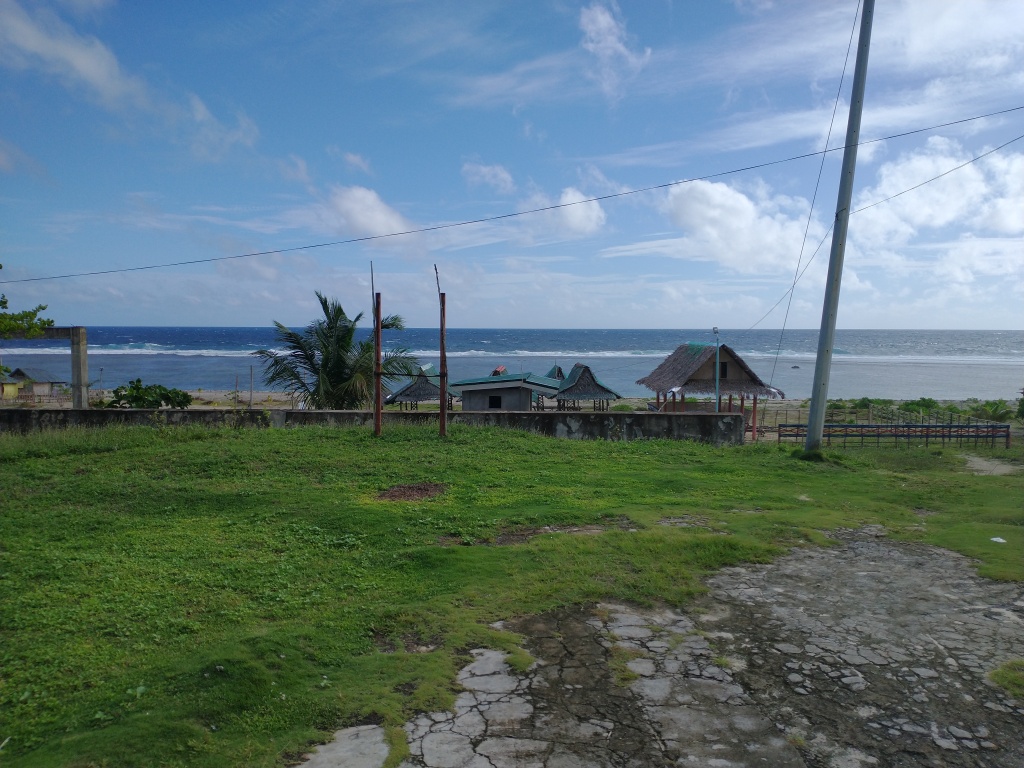
If you head east from here, the next stop is Guatemala. 8200 miles or so away.
Turn to the left…

The basketball court resides on the location of the old Catholic church, the church destroyed by the storm surge from typhoon Yolanda/Haiyan. The only remaining pieces of that church are the “flagstones” that I had brought to our house and made into a sidewalk.
That storm surge destroyed numerous houses and killed 10 people. Our house was one of the victims, you can read that in my older Philippine blogs. The house was a goner, anyway. The salt air had eaten away one of the critical supports for the floor. Yolanda saved us having to think about working on it. Our old floor? 300 yards south. It plowed a path through the jungle as it was carried by the ocean waves. The 10 victims I mentioned were buried there. Next to the floor. It was the only place free enough of downed trees to allow for a burial. Sad. Very sad.
I thought about checking it out this morning, but the thought of going there again was a little too emotional for me. Some children of a good friend are there…

Fresh bread, called pan-de-sal, made daily. A yummy treat. The old buoy is still here. Been here for over 100 years, since the mid 1910’s. The matriarch of the barrio gave me the story about it in 2015. She (Pillar) told me it was washed ashore before she was born, and she remembers playing on it as a toddler. That story in my older blogs. Praxy used to play on it when she was a child as well, in the 1960’s
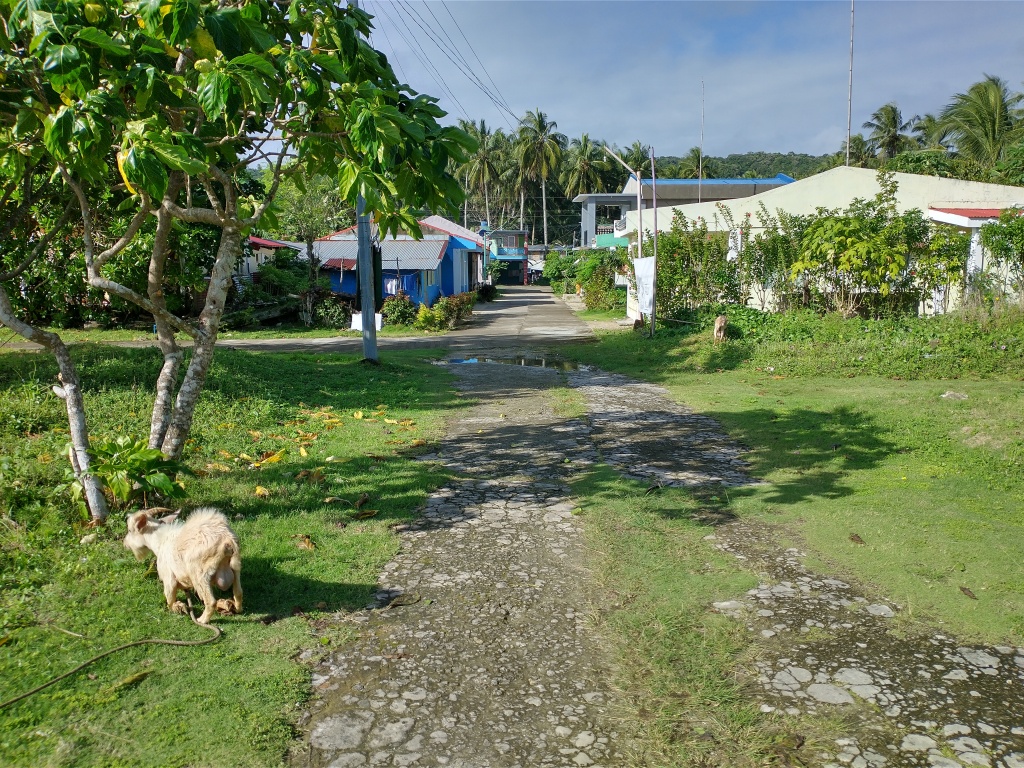
The old road behind the church. Now a feeding area for goats. There used to be many houses here.

We have several friends and relatives in this area. These houses survived Yolanda, but most were seriously damaged. You’d hardly know it, now. Filipinos are quite resourceful.
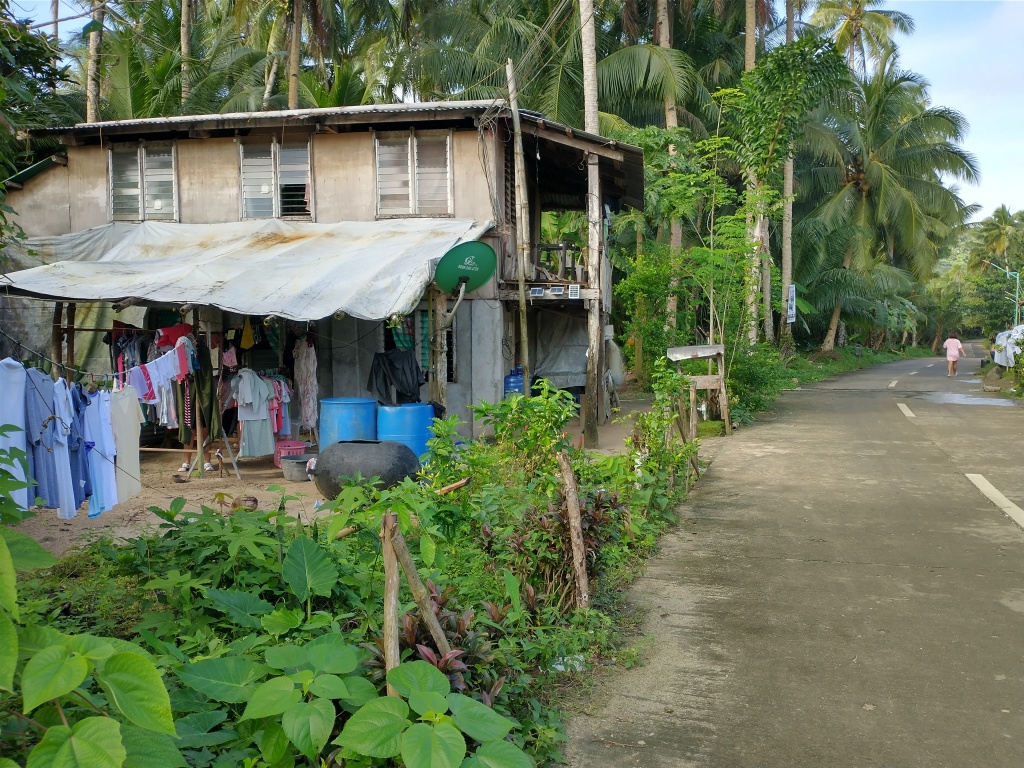
Notice there aren’t many people about. Everyone is worn out from three days of Christmas celebration. But, the lady to the left is doing laundry. Yes. By hand. No such thing as electric washing machines in this town. They don’t last long, anyway. The salt air destroys them.
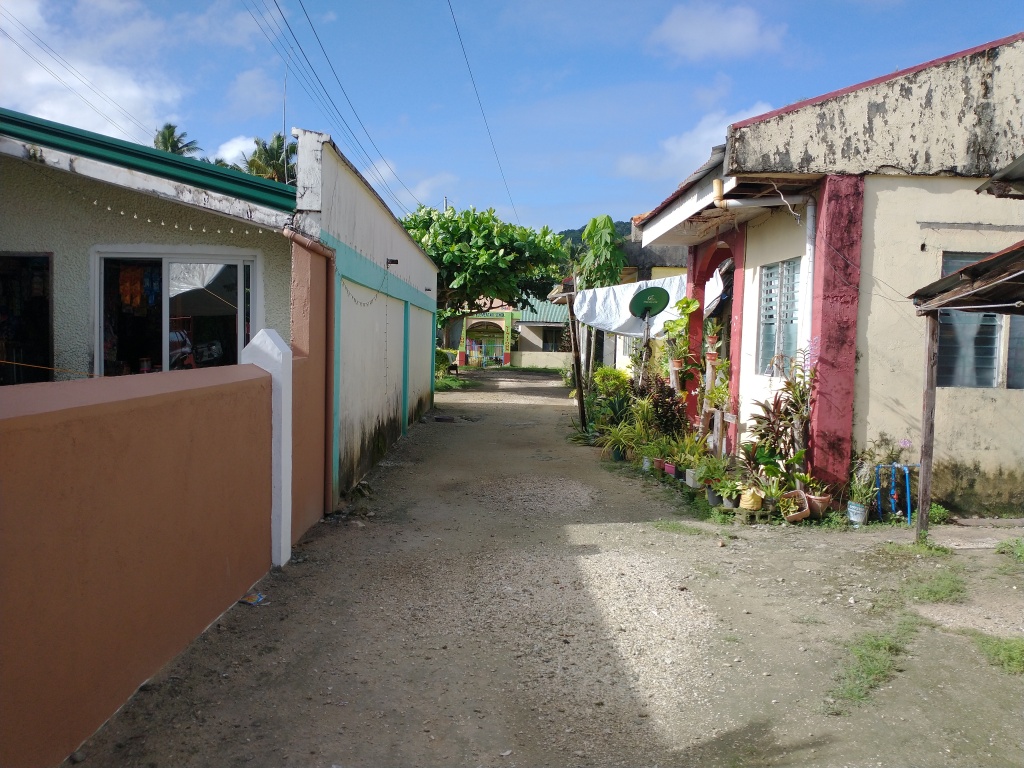
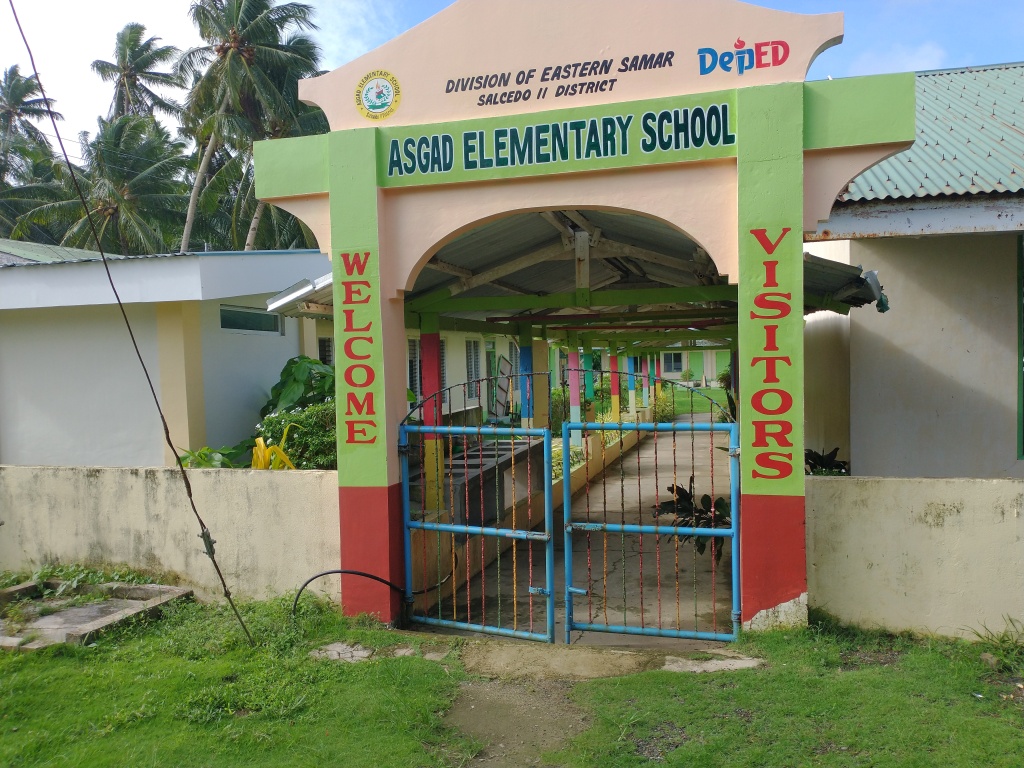
Turn down a narrow street to the elementary school. This was the evacuation area for Yolanda. Junior high students go to Salcedo. High schoolers to Guiaun or Matarinao.
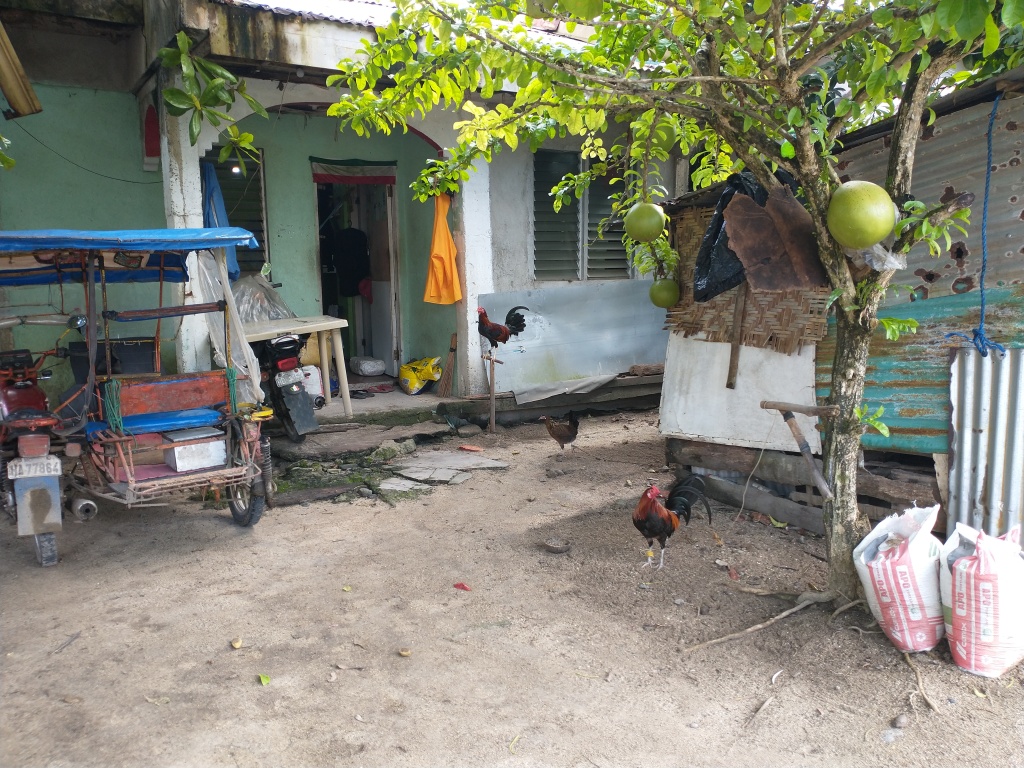
Fighting chickens. Noisy things. They are tethered to keep them separated. The owner of the chickens also owns a tricycle and a motorcycle.
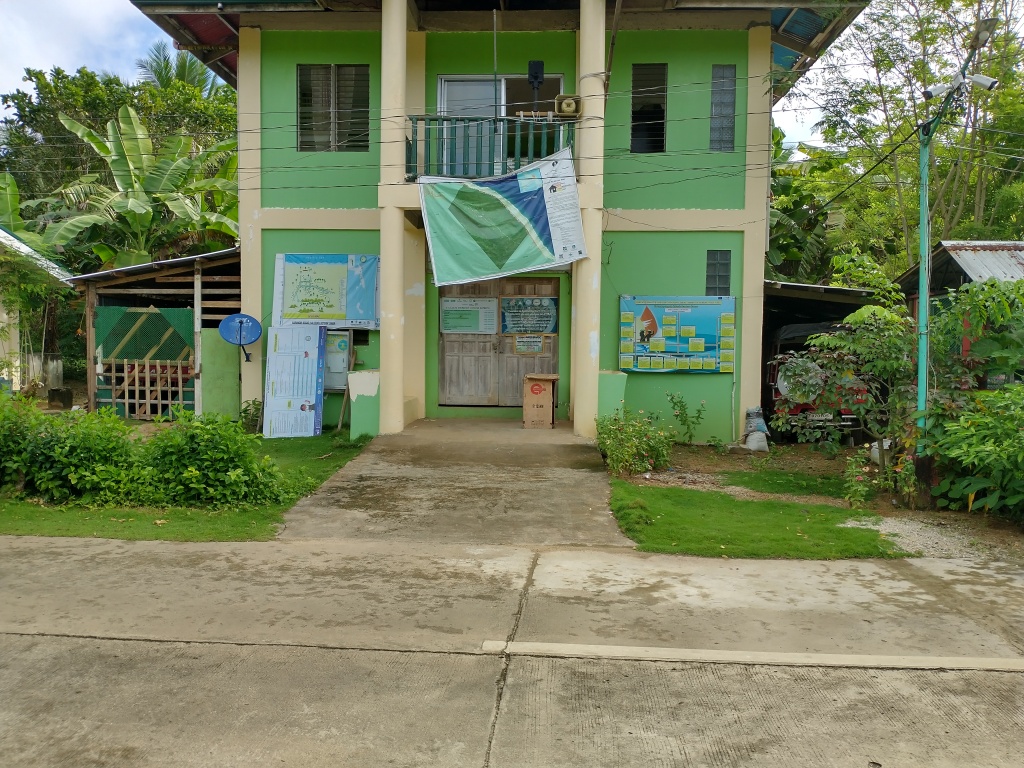
I’ve now walked back to the “relocation”. The refugees from Yolanda were NOT allowed to rebuild. Including us. We still own that property, but…that area has been condemned by the province and can only have temporary structures. Like our beach shelter, for example. And there are now huts for rent, called a “resort”. The only restaurant in town is at one of these resorts. Praxy and I will go there for dinner sometime soon.
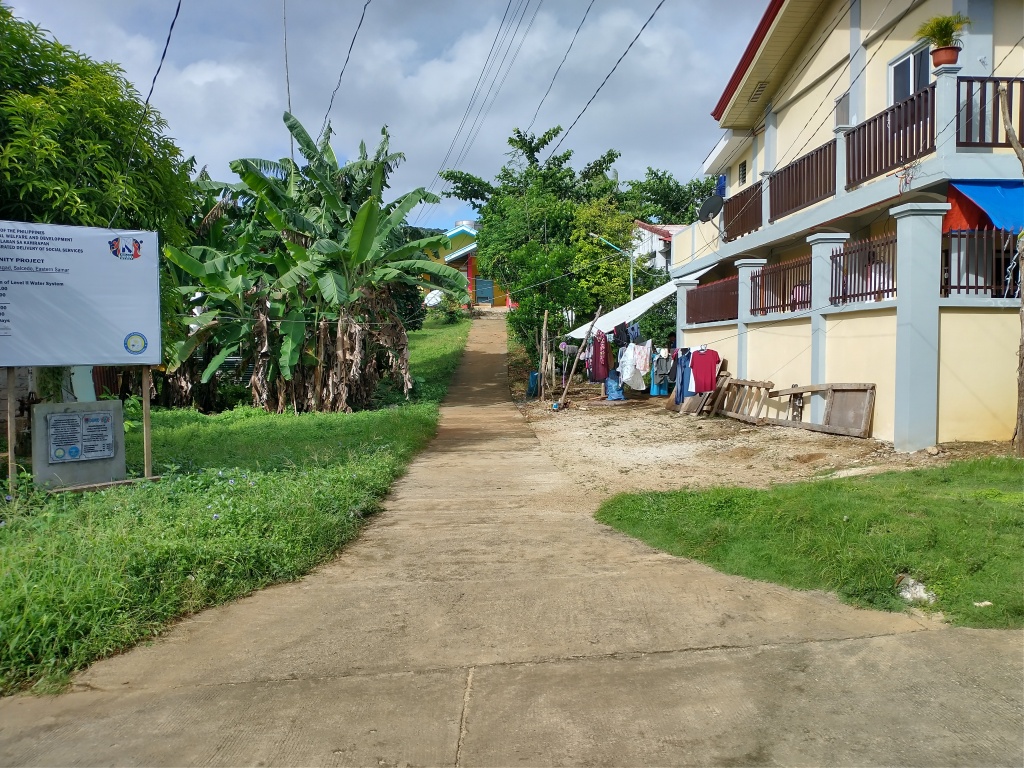
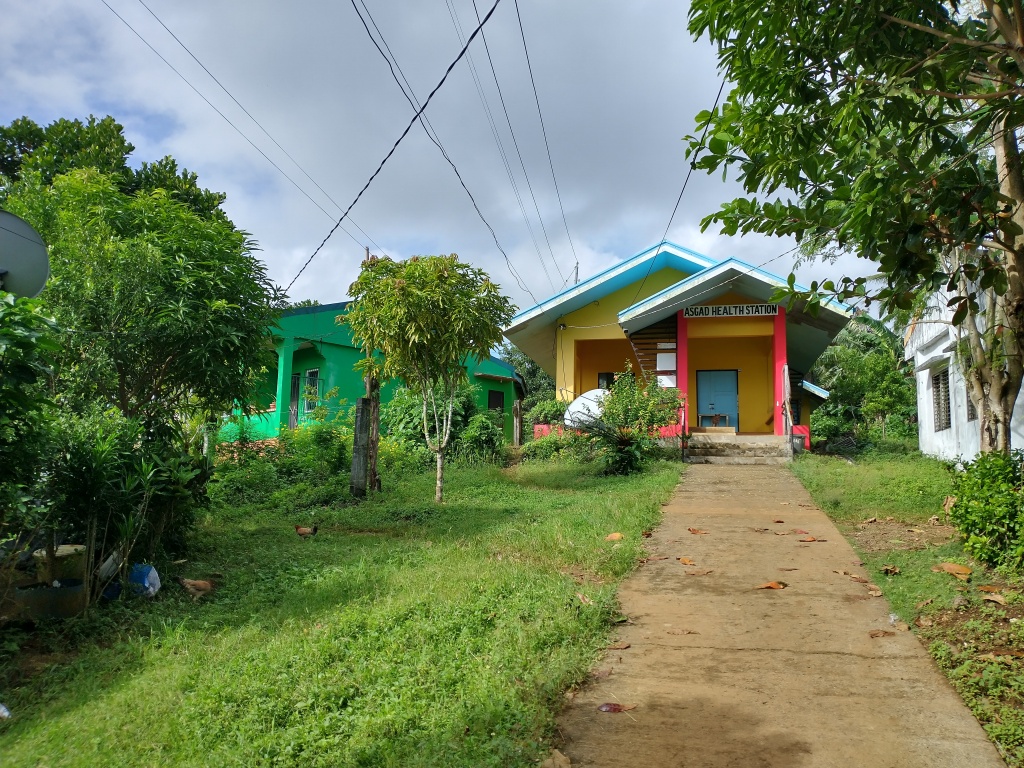
Up another little road, near our house, is the local medical clinic. Sadly, not in use. There is no money for a nurse, so it has been closed down. The medicines I donate are distributed by a local person that has a bit of training. Not ideal, but better than nothing. I would consider hiring someone part-time/on call, but no one is available.
Speaking of which, I sent a couple of bottles of naproxen sodium (Alleve’s ingredient) in one of our boxes. I wish I’d sent a LOT more. There are several older people now walking due to the relief in their joints. Saying that they are grateful is an understatement. I’ll send several bottles next time. Those 800 pills are just about gone!
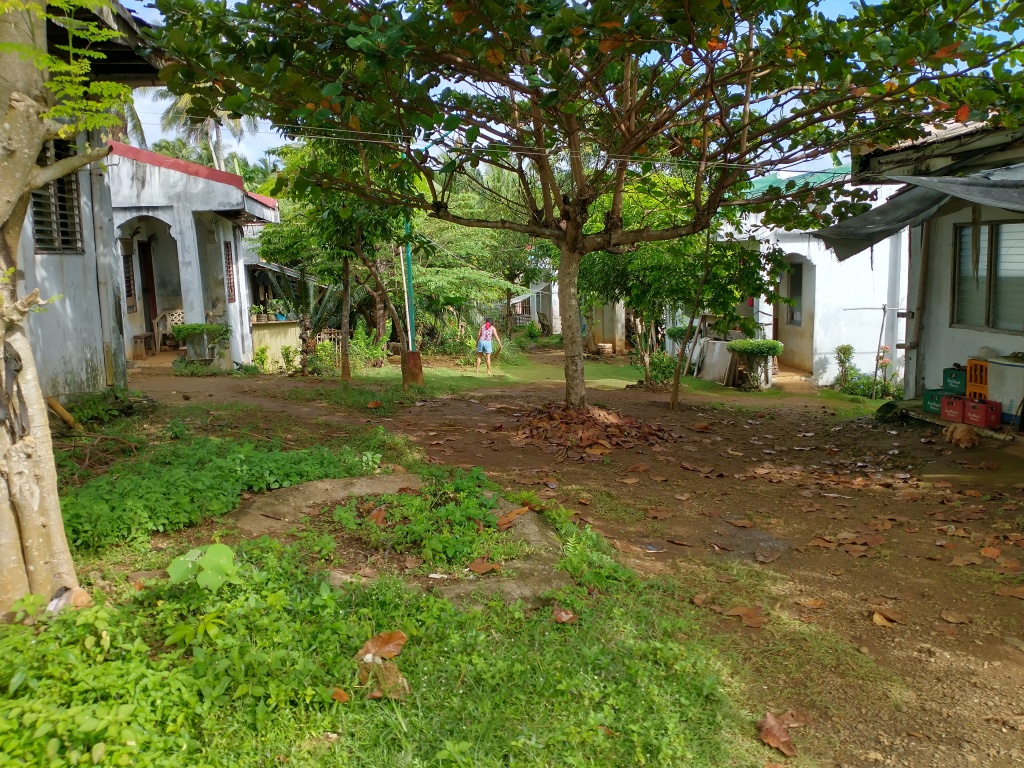
Here is a glimpse into the relocation. No roads, just foot paths. I’m guessing there are 35 or so houses tucked on the hillside above our place. The lucky ones, read better off financially, have electricity. The luckier ones have running water outside their front doors. I’m guessing that there are two houses in the relocation that have indoor plumbing. Ours and the neighbor across from us. We probably have the only working shower in the whole barrio. We also actually have a flush toilet. Last time we were here, it was a small bucket flush toilet. No indoor water.
The houses were donated by a wealthy German. The building is done, the Germans are gone, and the houses are starting to show a lot of wear and tear. No money, people cover the rotting tin roofs with tarps or they get wet during rain storms. Windows are disintegrating. We had to put a new roof on our place an have a bunch or termite damage repaired. New windows as well. The town of Salcedo administers the houses, no one owns them. Except for us. We improved ours and it looks like we can take possession if we want. The new house across the street is an exception. They purchased an old meeting area and built on it.
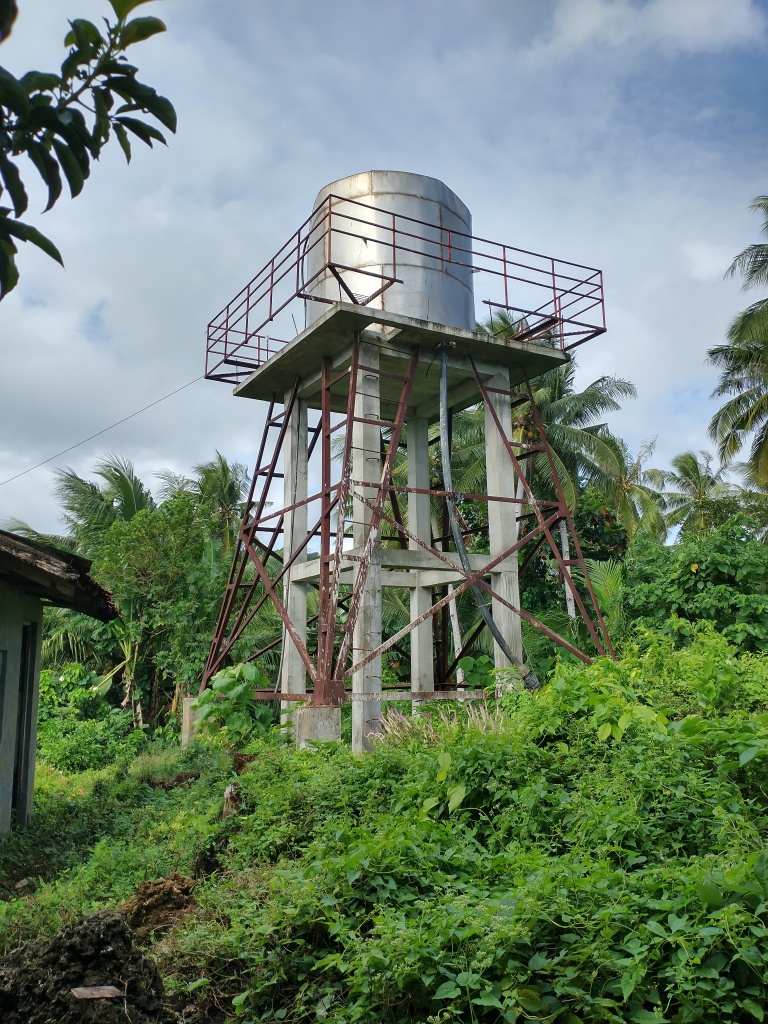
Behind the “medical clinic” The water tower, put in by the Germans. I didn’t know where it was until today. It is well above our house and we have excellent water pressure. In the main town? Not enough for a shower. Barely enough for a flush toilet.

Our next door neighbors, Tibo and Tsing. Age wise in their 70’s. They are very poor, but hard working and honest. We’ve hired them to help us and they are investing that money into their sari-sari store. She does laundry and sweeps our yard. He helps us with domestic chores we don’t have the skill to handle (read, we have machines in the US that do the work for us and we don’t have the tools to do the job). I buy 5 gallons of water from them frequently at 30 pesos. 60 cents for 5 gallons of safe drinking water. Tibo delivers it to our front steps. Note the roof. They have a tarp to collect rain water for laundry. We gave them permission to use our rain barrel and outdoor fresh water tap. Makes it MUCH easier for them. Otherwise, they have to pump salty water from a well across the street.
Our house is on this corner.
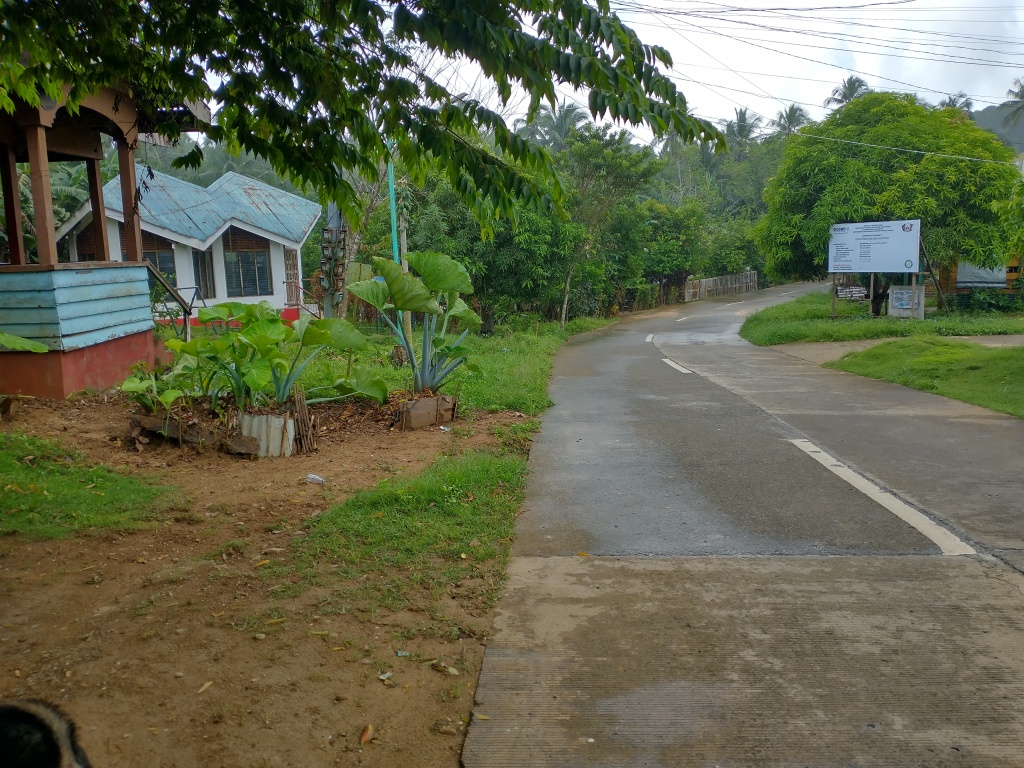

Our house in the relocation. I added one of our two rain barrels to the front…
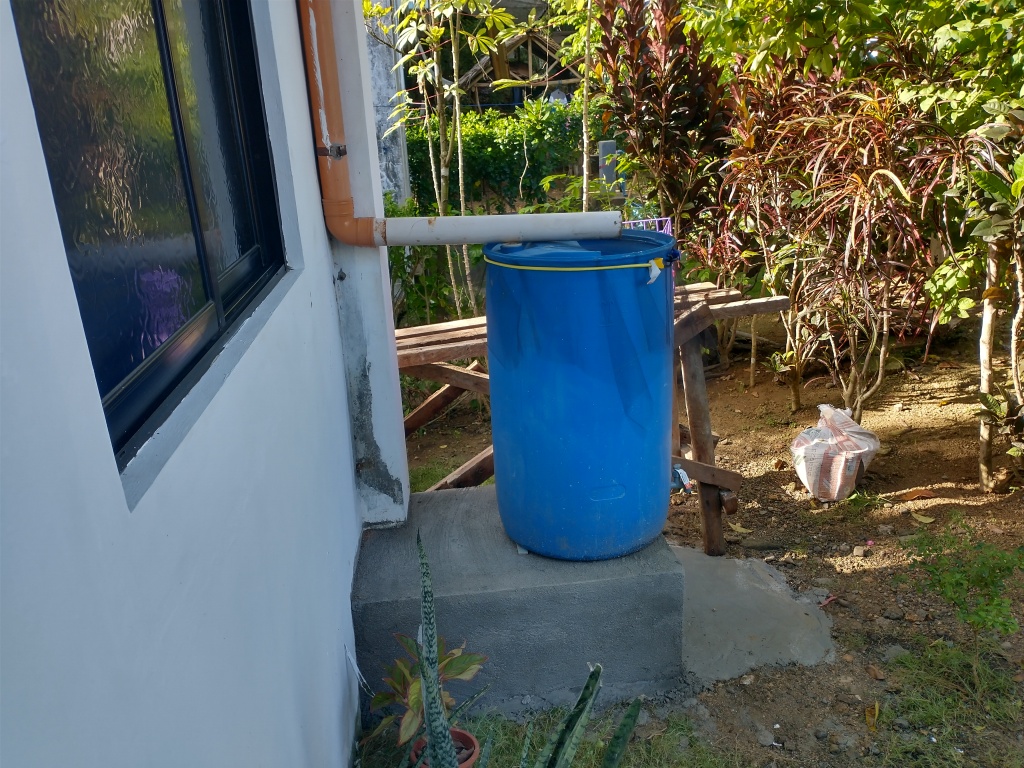
It even has a spigot. Tsing can use this water as long as she likes. One half inch of rain on our roof equals one full barrel of water. That barrel can fill in 15 minutes during a good storm. Easily. Praxy loves that rain water for washing her hair. Flooding? Nope. The ground is well drained. The water runs off into the nearby ocean. 250 yards away.
That is Asgad. Not exactly a bustling tourist metropolis. Poverty rate in this area is over 33%. We help where we can. Clothes, medicines, kitchen supplies, employment. The people seem happy and we are treated with kindness and respect. It’s a bit boring here, but if a person likes peace and quiet, here it is!
12/26/2023 4:15pm
